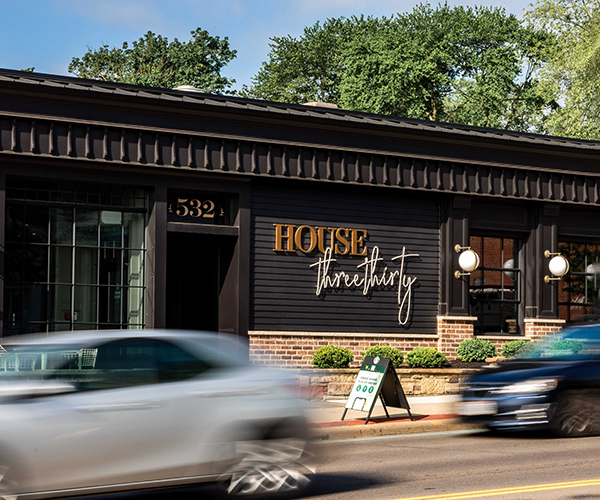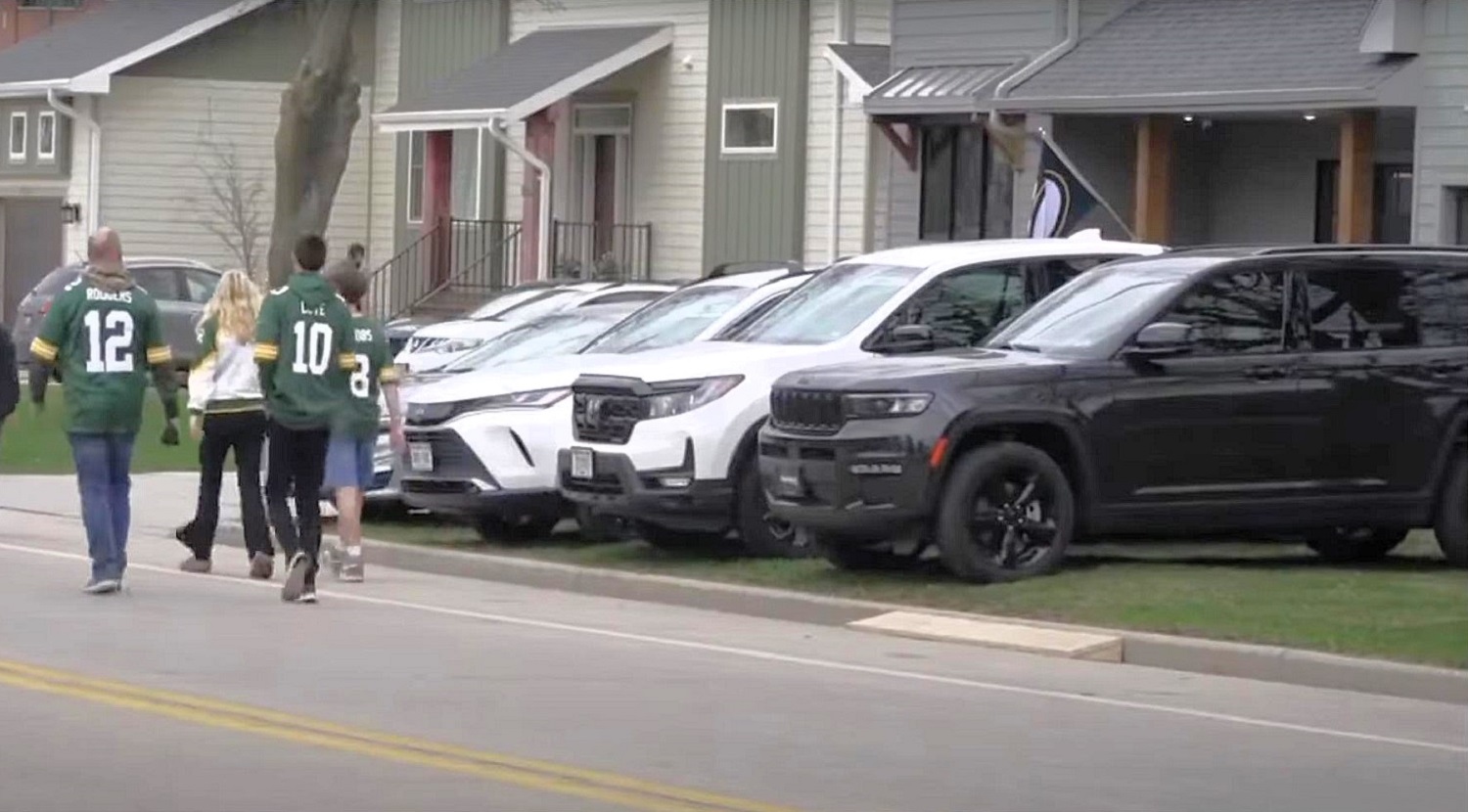Why Did the WNBA's Cleveland Rockers Leave 20 Years Ago? Largely, LeBron James
by Vince Guerrieri | Nov. 24, 2023 | 12:00 PM
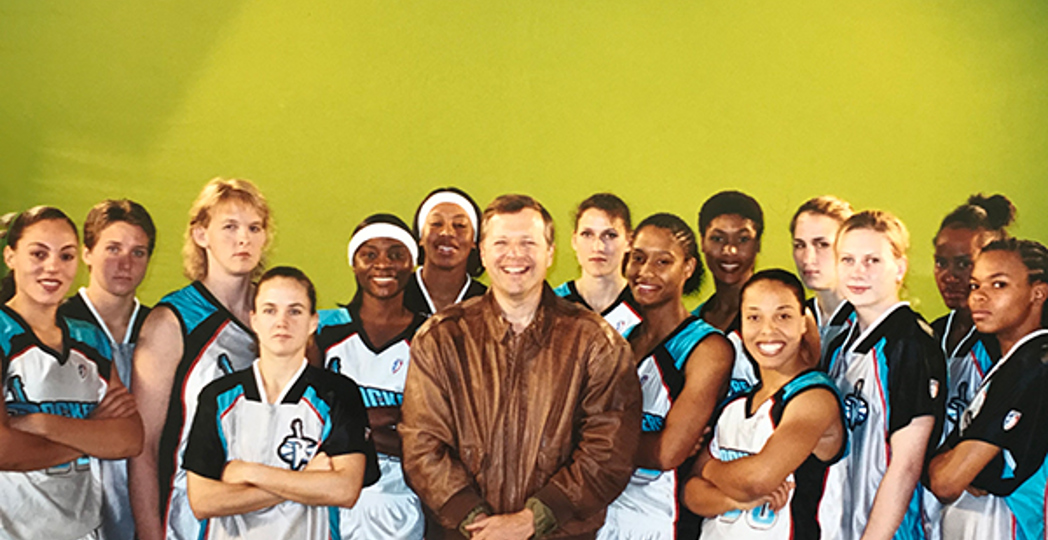
Courtesy Dan Hughes
A choice was about to be made, and everyone knew it.
That was the situation on Aug. 29, 2003, at Gund Arena. There was more at stake than just advancing to the next round of the WNBA playoffs for the Cleveland Rockers when they met the Detroit Shock in the first game of the opening round.
The Rockers, a charter member of the WNBA when the league formed in 1997, were in a tenuous spot — due, at least in part, to one of the 8,450 fans at their playoff game.
Rockers All-Star forward Chasity Melvin says she and other players recognized LeBron James in the stands. How could you not? The high school star from Akron had been drafted by the Cavs two months before. He was a magazine cover fixture and about to become one of the faces of the NBA.
Melvin and her teammates were uneasy about the Rockers’ fate. “We all felt it,” she says. “We were really trying to win the championship that year in hopes that maybe they wouldn’t fold.”

(Courtesy Dan Hughes)
The Rockers joked about the 18-year-old James potentially buying the Rockers. “He’d just signed a $90 million Nike contract,” she says.
No official word was out, but George and Gordon Gund, the brothers who owned the Cavaliers and Rockers, needed to let go of the fledgling Rockers in order to get the most out of James’ addition.
“It was disheartening, and it was a business,” says Melvin. “They knew LeBron James was going to be a savior. They had to sell us.”
There was no championship. The Rockers lost the best-of-three series to the Shock, which went on to win their first WNBA title that year. In September, Melvin’s fears were confirmed. The Gunds would no longer operate the Rockers.
Efforts were made to find a new owner, either in Cleveland or in another city. There was some fan protest to keep the team in town, including one outside Gund Arena for James’ NBA debut in October, but it was all to no avail. In December, the team’s folding was announced. There would be a dispersal draft the following month.
“I’ve coached in four different stops in the WNBA,” says Dan Hughes, the Rockers’ second coach. “I won two championships in Seattle and spent 12 years in San Antonio, but the job I probably wanted the most to work out was in Cleveland.”
Melvin is even more blunt. “I really think if they didn’t get a pick that would change the stratosphere, the Rockers might still be in Cleveland.”
Women’s sports were having a moment in 1996. The Summer Olympics that year in Atlanta featured new women’s sports and a total of 800 more women competing than had four years prior.
And no sport captured fans’ imagination that year like women’s basketball. In 1992 a change was made that allowed professional athletes to compete for USA Basketball, leading to the formation of the men’s Dream Team. That squad of NBA All-Stars blew through international competition, winning the gold medal. Four years later, a similarly star-studded women’s team featuring Rebecca Lobo, Dawn Staley, Lisa Leslie, Sheryl Swoopes and Teresa Edwards dominated the Olympics after a 10-month tour.
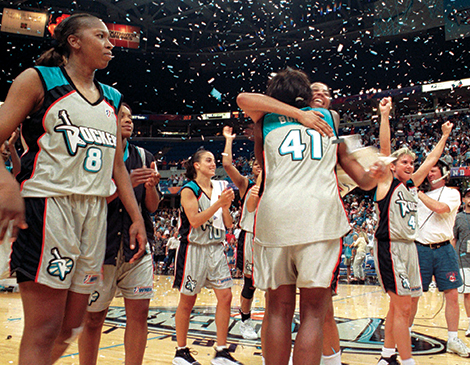
(Courtesy AP Photo/Jamie-Andrea Yanak)
“Interest was so strong, it validated the decision to form the WNBA right after the 1996 Olympics,” says Val Ackerman, who worked for the NBA at and then became the founding President of the WNBA.
In fact, interest was so strong that two professional women’s basketball leagues started. The American Basketball League started its play in the winter of 1996. The WNBA would start in 1997, playing in the summer during the NBA offseason. The ABL actually paid better, Ackerman notes, but they also required players to sign exclusive contracts. Ackerman says the WNBA was structured to allow players to play abroad in the off-season. “I made 10 times what I made in the WNBA playing overseas,” says Rushia Brown, whose seven-year WNBA career included six summers in Cleveland.
The new WNBA featured eight teams which were initially owned and operated by the league, with all of them based in cities home to an NBA team. In most cases, the WNBA team’s nickname was even a nod to the local NBA franchise. For instance, the WNBA’s Charlotte Sting and Sacramento Monarchs referencing the NBA’s Charlotte Hornets and Sacramento Kings, respectively.
“We’d identified Cleveland as one of our charter cities,” Ackerman says. “I think the biggest factor was [NBA Commissioner] David Stern’s relationship with Gordon Gund. He was very supportive of the league and of David’s vision to strengthen the connection of pro basketball and women. Geographically, it was a good fit, too. Cleveland really was a Midwest anchor for us.”
It was a good fit geographically for Janice Braxton, a forward for the Rockers during their first three seasons. She’d spent the previous decade playing overseas, where she met her husband, a Cleveland area native.
“I said I wanted to play in Cleveland, or I couldn’t play, and they allowed me to do it,” she says.
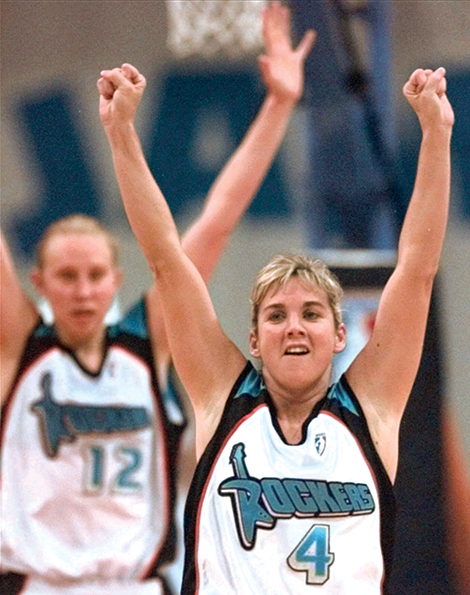
(AP Photo/Tony Dejak)
The Rockers — the name a nod to the recently-opened Rock & Roll Hall of Fame — opened their season in the summer of 1997 to great fanfare. Among the Rockers’ fans? Then-Cavs announcer Joe Tait, who filled the same role with the new team. Amanda Petrak, who did media relations for the Cavs and Rockers, noted that the WNBA team still flew commercial flights — and Joe was willing to make the trip with them.
“We were really, really fortunate that Joe Tait was willing to do the WNBA and NBA games,” Petrak says. In a 2002 Sports Illustrated story, Tait said he appreciated the women’s game, calling it “basketball the way it ought to be.” (Tait died in 2021.) “Joe Tait was the best,” Braxton says. “As long as Joe was on the radio, we knew we were good.”
The late 1990s were a heady time to be in Cleveland. In addition to the Rock Hall, the Rockers and Cavs played in a new arena — right next to a new ballpark for the Indians, which would host the All-Star Game in 1997.
A lot of players lived in Reserve Square downtown, including Brown.
“We had everything there we needed,” she says. “Postgame, we would always go down to the Flats because no place Downtown was open.” (Brown noted, somewhat ruefully, that the nice restaurants close to the arena came after LeBron’s arrival.)
“Cleveland was the bomb,” says Melvin, who joined the team in 1999. “It will always have a special place in my heart.”
The Rockers went 15-13 in 1997. They didn’t advance to the postseason, but players already felt like they’d accomplished something.
“We had a chance to do something great,” Brown says. “You don’t always focus on the result. You focus on the process and relationship. That first year, we had an amazing time — and we won a few games.”
In 1998, the Rockers fared even better, going 20-10 to win the five-team Eastern Conference, but lost the semifinals to Phoenix, dropping a deciding third game. That year was the Rockers’ peak in attendance, averaging 10,350 fans per game.
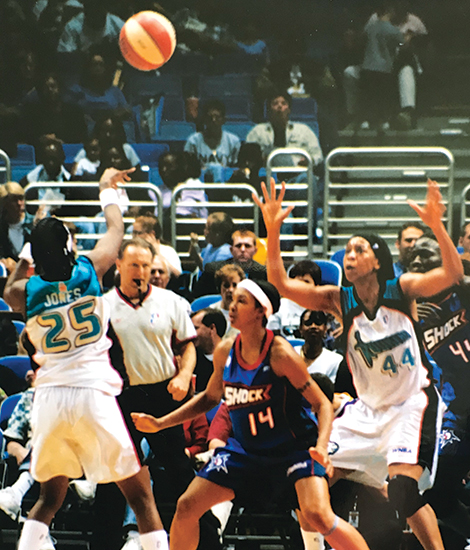
(Courtesy Dan Hughes)
The WNBA also got some welcome news at the end of that year. Its only stateside competition, the ABL, filed for bankruptcy protection and folded.
“They went out of business quickly,” Ackerman says. “They went head-to-head with college basketball and the NBA. They were aggressive with player salaries, and didn’t have the wherewithal to support that.”
Things bottomed out for the Rockers in 1999, as they went 7-25. The team fired coach Linda Hill-McDonald and hired Hughes, an Ohio native who was well-traveled among the college ranks in the state. His father had alerted him to a new women’s league starting, and he ended up as an assistant in Charlotte. After 12 games in 1999, Sting coach Marynell Meadors was fired, coincidentally after a loss to the Rockers, and Hughes became the coach. Charlotte recovered to advance to the playoffs, losing to the New York Liberty in the conference finals, and Hughes parlayed that into the Cleveland job.
By then, Hughes said, the Rockers had really become a part of the Cleveland sports fabric. The crowds were not enormous (in most instances, seating for games was limited to the lower bowl of Gund Arena), but the Rockers had developed a following through their play and personal appearances.
“Our crowds and our product was pretty competitive with what I saw around the league,” he says. “We saw as many or more fans.”
The Rockers advanced to the playoffs in each of the next two years but had a down year in 2002, going 10-22. After that season, ownership of the WNBA teams was transferred from the league to the local teams. It was a fateful decision, as two teams moved and two others folded.
In the spring of 2003, Gordon Gund said he remained committed to the Rockers, but it soon became obvious that wouldn’t be the case.
“The Cavs had the opportunity to draft a talented high school player named LeBron James, and the word came down that the team was focusing on rebuilding the Cavs,” Ackerman says. “The WNBA just became a lesser priority at that point.”
Hughes says he had no idea the team would fold. The Rockers went 17-17 before losing to Detroit in the playoffs. “You have your year-end meeting with players, and I didn’t sense anything wrong,” he says. “But then I had a meeting with ownership. (Cavs GM) Jim Paxson said as long as the Rockers are here you’ll be the coach. I didn’t understand what he meant.”
Two weeks after the end of the season, it was announced that the Gund brothers would no longer own and operate the Rockers, citing a lack of revenue and declining attendance (down to 7,400 in 2003, the lowest in team history). A year earlier, the Gunds had sold their NHL franchise, the San Jose Sharks — and in early 2005, they’d sell the Cavs.

(Courtesy Dan Hughes)
“I think they weren’t sure if the Rockers would be a help or a hindrance in a sale,” Petrak says. “I don’t know that they actually tried to shop the Rockers.”
“I didn’t quite understand the reasoning how this all happened,” Hughes says, “but I realized it about a year later when I saw Mr. Gund sell the team.”
The new Cavs owner was Dan Gilbert, who still owns the team today.
“I feel like Dan Gilbert would have really liked to own a WNBA franchise, too,” Petrak says. “I just feel like the timing wasn’t right.”
The Rockers were dispersed in January 2004. Some players went to other WNBA teams, some went overseas. But there’s a sense of camaraderie that hasn’t gone away even two decades later.
“I’m still very good friends with most of my Cleveland teammates,” says Brown, who plans to have a Rockers reunion in Cleveland when the city hosts the Women’s Final Four in April. “There was a culture of family that allowed us all to be friends after we went our separate ways.”
“This was my city,” Melvin says. “This was my team. I wanted to be like [San Antonio Spurs Hall of Fame forward] Tim Duncan and take Cleveland to the finals.”
“I owe Cleveland immensely, and I’m sad I couldn’t be here my whole career,” Hughes says. “The Rockers really gave me my brand, and San Antonio and Seattle were wonderful stops, but I wish I could have been in Cleveland my whole career. I do wonder what might have been.”
It’s not just idle chatter. That 2003 team was a great collection of talent. In addition to Melvin, the team had Penny Taylor, who was at the start of an all-star career in the WNBA, as well as Jen Rizzotti, who has gone on to a lengthy coaching career. In fact, both Rizzotti and Hughes served as assistants on former Rockers assistant and current Minnesota Lynx head coach Cheryl Reeve’s 2021 US Women’s Olympic Team coaching staff that helped to capture the gold medal.
Today, there are 12 teams in the WNBA. Expansion is happening, as the league announced a new team in the Bay Area beginning in 2025, and plans to add a 14th team by that time, as well.
“It’s certainly not a flash in the pan like a lot of people expected it to be,” says Petrak, who played college basketball at St. Bonaventure before embarking on her media relations career. “Women’s basketball has come so far. The fan base and skill set has expanded and improved.”
Since the Rockers folded, there hasn’t been a serious attempt for Cleveland to return to the WNBA. But people still remember.
“I still meet people who recognize me and knew I played for the Rockers,” Braxton says. “They enjoyed it. And they always ask, ‘When are they bringing the Rockers back?’”
Where are they now?
Val Ackerman is Commissioner of the Big East Conference.
Amanda Petrak still lives in the Cleveland area and works at KeyBank.
Rushia Brown lives in Atlanta and is a motivational speaker. She has worked in WNBA front offices and helped found the Women’s National Basketball Alumnae.
Chasity Melvin is a high school basketball coach in North Carolina and an on-air announcer for the Washington Mystics.
Dan Hughes is retired from coaching and living in the Dayton area. He occasionally consults and does some broadcasting, and remains a regular visitor to the Rock & Roll Hall of Fame.
Janice Braxton lives in the Cleveland area. She works as an office manager and is active in Cleveland’s National Basketball Retired Players Association chapter.

Vince Guerrieri
Vince Guerrieri is a sportswriter who's gone straight. He's written for Cleveland Magazine since 2014, and his work has also appeared in publications including Popular Mechanics, POLITICO, Smithsonian, CityLab and Defector.
Trending
-
1
-
2
-
3
-
4
-
5





